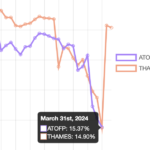Remember the days when government debt got people worried, when ‘bond vigilantes’ stalked the Earth? Today, after almost a yearlong pandemic, there have been eye-watering increases in sovereign debt among the largest economies. The world’s largest borrower, United States, showed a 9.8% increase in its outstanding bonds during 2020, while Japan’s debt increased by 9.4%, according to our sovereign debt tool, based on Markit iBoxx data.
Then take a look at Europe. Covid-ravaged Italy increased its debt by 13.3% during the year, France by 19.6% and the United Kingdom by a whopping 29.6%. And that’s just 2020 data. Ongoing lockdown-related spending and post-pandemic stimulus measures means that debt is going to have to increase a lot more.

The last time debt increased so much and so quickly was after the 2008 financial crisis, and then the reaction was quite different. In June 2010, UK chancellor George Osborne imposed an austerity budget, increasing VAT and cutting spending. A Republican-dominated Congress ensured similar cutbacks happened in the US, and in Japan, tax rises led to a recession. In the Eurozone, austerity didn’t prevent a debt crisis – it created one, forcing the European Central Bank to start quantitative easing measures in 2012.
In the last decade, both the intellectual climate and financial structure around government debt have changed. Fear of inflation has been replaced by deflation driven by technological change and increased energy efficiency. Economists are increasingly influenced by Modern Monetary Theory, which holds that budget deficits are a form of wealth creation. Meanwhile, QE is no longer seen as an emergency measure, but is rather a standard central bank policy tool.
Comments are closed.
 Levelling the Playing Field
Levelling the Playing Field
 Barclays and Labour's growth plan
Barclays and Labour's growth plan
 Plummeting bonds reflect souring UK mood for outsourcing and privatisation
Plummeting bonds reflect souring UK mood for outsourcing and privatisation
 Dimon rolls trading dice with excess capital
Dimon rolls trading dice with excess capital
[…] Making debt disappear […]
[…] written before about the gross financial need (GFN) metric, devised by the International Monetary Fund to assess […]